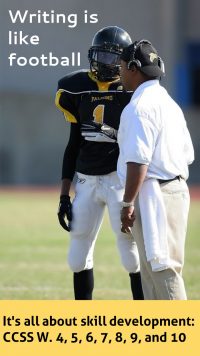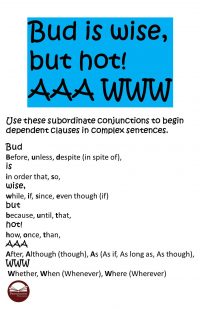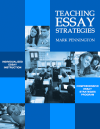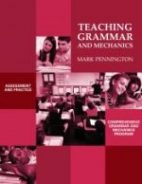Using Music to Develop a Productive Writing Climate
In my last article, “Using Music to Develop a Creative Writing Culture,” I suggested that music remains the singularly most influential motivator and reflection of youth culture. Ask students how much they listen to music today. It’s certainly more than they spend reading or writing. And they listen to music while they are on Facebook®. That’s a powerful combination. It seems to me that we can apply a few lessons from how our students combine music and social networking to how we should teach them to write.
As music has always been a social medium, in makes sense to analyze the music business, and songwriting in particular, to see how we might apply some of their lessons to improve student writing.
At the height of the Great Depression in 1931, the recently completed Brill Building at Street in Manhattan opened its doors. The owners were forced “by the deepening Depression to rent space to music publishers, since there were few other takers. The first three, Southern Music, Mills Music and Famous Music were soon joined by others. By 1962 the Brill Building contained 165 music businesses (http://www.rockphiles.com/rp_artist.php?act_id=19).”
“A musician could find a publisher and printer, cut a demo, promote the record, and cut a deal with radio promoters, all within this one building. The creative culture of the independent music companies of Brill Building and the nearby 1650 Broadway came to define the influential “Brill Building Sound” and the style of popular music songwriting and recording created by its writers and producers (http://www.rockphiles.com/rp_artist.php?act_id=19).”
While songwriters such as Carole King, Neil Diamond, Boyce and Hart (writers of The Monkees hits), and Neil Sedaka were cranking out the hits out of the Brill Building community that defined American music in the 1960s, their British counterparts were doing the same thing on Denmark Street in London. On this short, narrow street The Beatles, The Rolling Stones, and Jimi Hendrix all recorded in basement studios. Publishing companies were headquartered on this street.
The Kinks’ Ray Davies writes the following in their 1970 hit, “Denmark Street.”
Down the way from the Tottenham Court Road
Just round the corner from old Soho
There’s a place where the publishers go.
If you don’t know which way to go
Just open your ears and follow your nose
“cos the street is shakin’ from the tapping of toes
You can hear that music play anytime on any day
Every rhythm, every way
In 1972 “Elton John wrote his classic early song Your Song, here. Later, the Sex Pistols lived above number 6 and recorded their first demos there. The street contains London’s largest cluster of music shops. It was also the original home of London’s biggest science fiction and comic store, Forbidden Planet.
Writing Lesson #1
Although writing can be done most anywhere, it certainly makes sense to do so where resources are available and accessible. Both the Brill Building and Denmark Street provided all of the resources necessary to write, record, market, and sell music. A teacher’s classroom can provide the necessary resources for academic writing. Not just dictionaries, thesauruses, and computers… but the human resources as well. The writing expertise of the teacher and the listening ears of fellow student writers make the entire process of composition efficient within the classroom community. In my experience, rarely does the quality of at-home or at-library student writing match the level of in-class composition.
There’s just something about the social nature of composition that motivates creativity. Don Kirshner, 1960s publisher, record producer, and radio/television mogul recognized the fact that massing talent would be beneficial. Kirchner subdivided his Brill Building office space into cubicles and hired eighteen songwriters to crowd into these spaces. He then directed his songwriters to churn out love songs, and occasionally dance and novelty hits, for the teen masses (http://www.rockphiles.com/rp_artist.php?act_id=19).
“Describing conditions in the Brill Building, (Barry) Mann said, Cynthia ( ) and I work in a tiny cubicle, with just a piano and a chair, no window. We’d go in every morning and write songs all day. In the next room Carole (King) and Gerry (Goffin) are doing the same thing, with Neil (Diamond) in the room after that. Sometime when we all get to banging pianos, you can’t tell who’s playing what.’ (http://www.rockphiles.com/rp_artist.php?act_id=19).”
Writing Lesson #2
A productive writing climate can be promoted by establishing a collaborative community of student writers. Allowing students to help each other by “borrowing” ideas, providing immediate feedback (including criticism), and thinking out loud can motivate effort and improve the quality of the product. A community that feels that they are all in the same boat remains task-oriented and maintains motivation. There is a reason that Don Kirshner did not let his songwriters work from their apartments.
The teacher can facilitate this kind of intense writing community, ala Don Kirshner, by establishing a business-like, no-nonsense, and product-driven set of high expectations within the tightly confined community. Kirchner, and good teachers, can choreograph the activities, but the writers are the ones who have to write the hits.
Beyond massing writing resources and developing a collaborative community of writers, there is something to be said for the value of competition and the pressure/adrenaline that it produces. “Carole King described the atmosphere at the Brill Building publishing houses of the period:
“Every day we squeezed into our respective cubby holes with just enough room for a piano a bench, and maybe a chair for the lyricist if you were lucky. You’d sit there and write and you could hear someone in the next cubby hole composing a song exactly like yours. The pressure in the Brill Building was really terrific-because Donny (Kirshner) would play one songwriter against another. He’d say: ‘We need a new smash hit’-and we’d all go back and write a song and the next day we’d each audition of Bobby Vee’s producer (The Sociology of Rock 1978).”
Writing Lesson #3
One of the positive outcomes of developing a productive writing climate is that success breeds success. A healthy competition among student writers can be enormously motivating. Students care about what other students think, no matter what they say. Public sharing of student writing in class, online, in book stores, coffee houses, etc. can inspire quality writing. More gifted students can inhibit some student writers, but the wise teacher can even use these inhibitions to improve writing.
*****
The author’s TEACHING ESSAYS BUNDLE includes the three printable and digital resources students need to master the CCSS W.1 argumentative and W.2 informational/explanatory essays. Each no-prep resource allows students to work at their own paces via mastery learning. How to Teach Essays includes 42 skill-based essay strategy worksheets (fillable PDFs and 62 Google slides), beginning with simple 3-word paragraphs and proceeding step-by-step to complex multi-paragraph essays. One skill builds upon another. The Essay Skills Worksheets include 97 worksheets (printables and 97 Google slides) to help teachers differentiate writing instruction with both remedial and advanced writing skills. The Eight Writing Process Essays (printables and 170 Google slides) each feature an on-demand diagnostic essay assessment, writing prompt with connected reading, brainstorming, graphic organizer, response, revision, and editing activities. Plus, each essay includes a detailed analytical (not holistic) rubric for assessment-based learning.

















